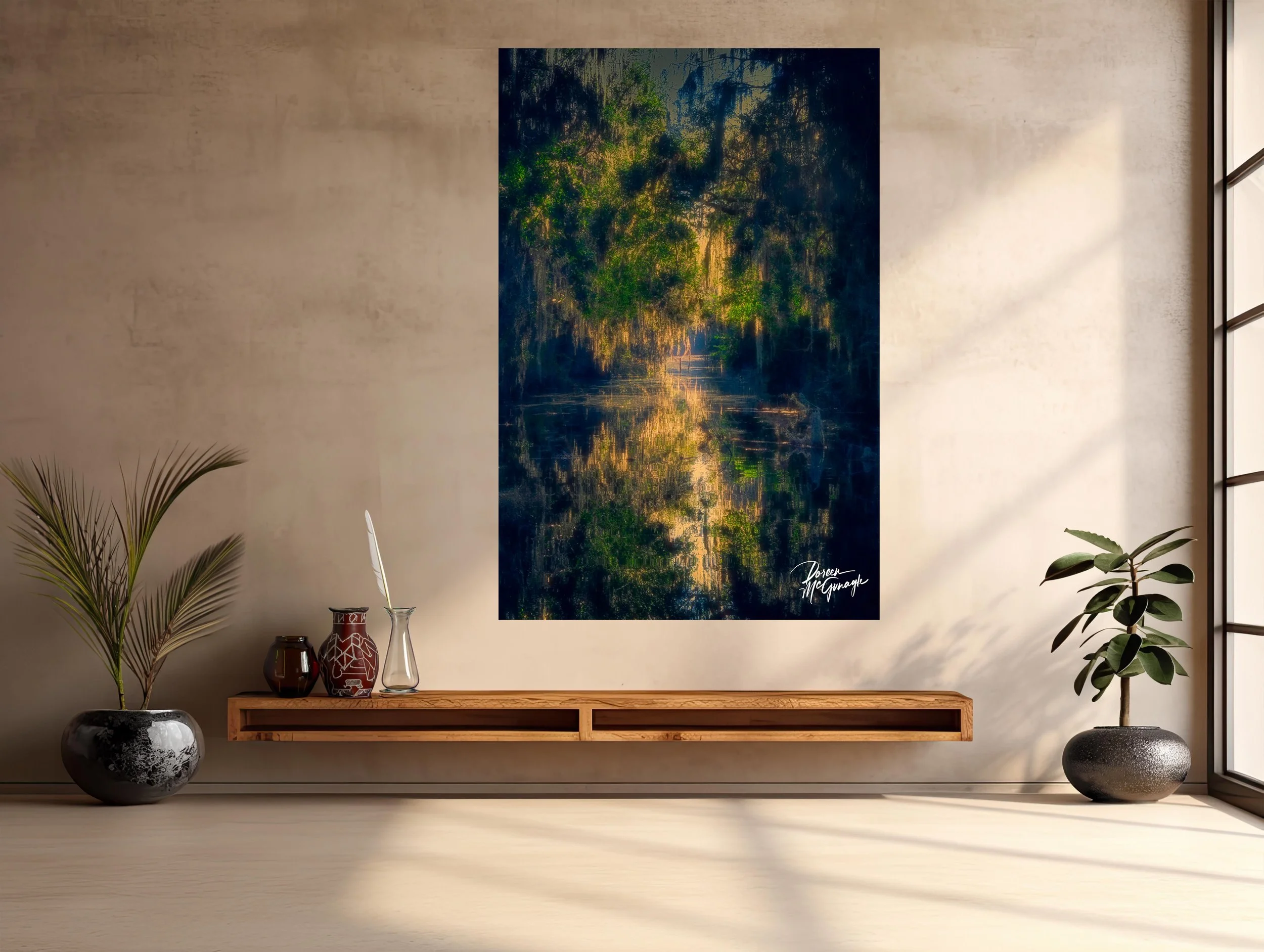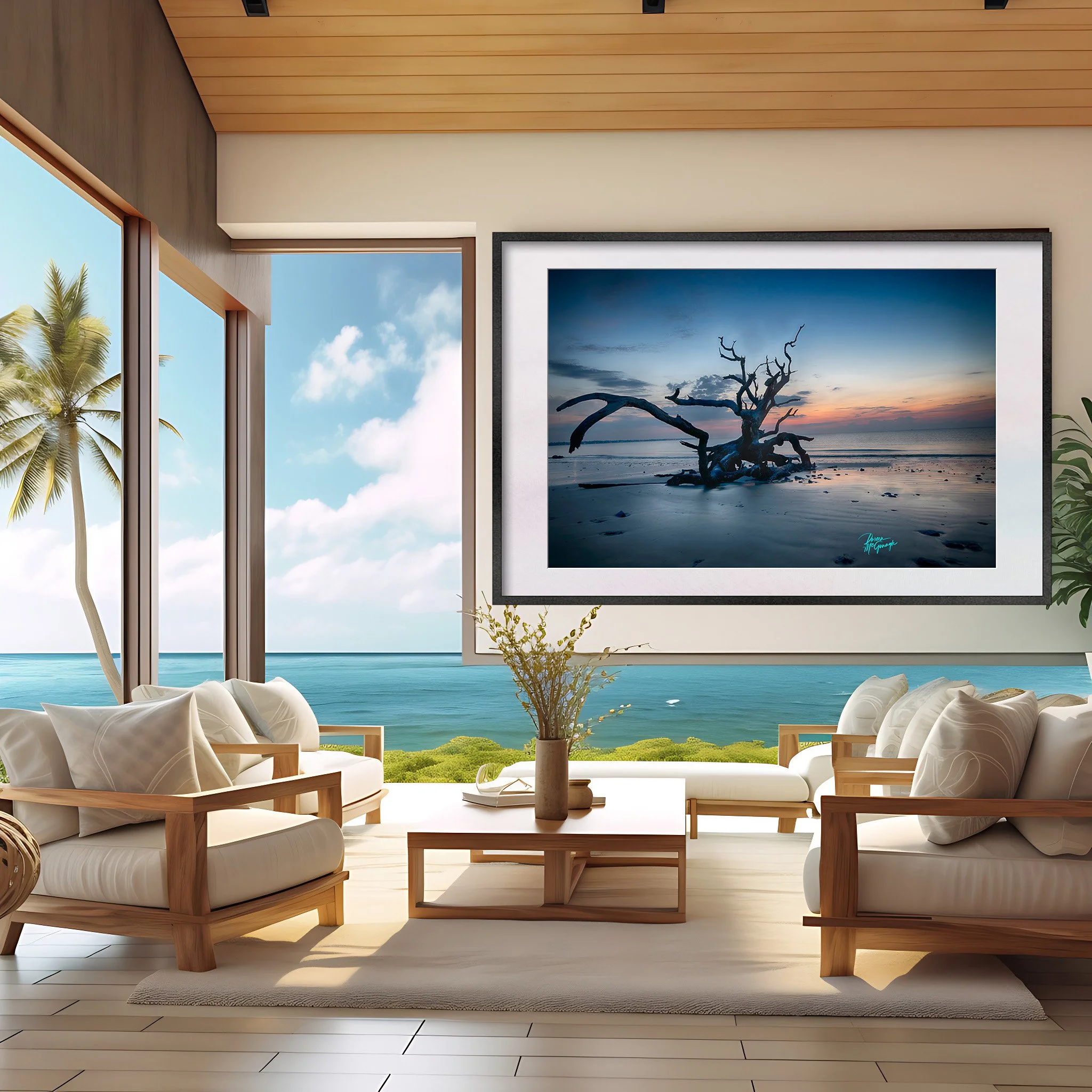What Are the Best Materials for High-Quality Nature Photography Prints?
When investing in museum-quality photography prints, selecting the right materials is crucial. The material not only enhances the visual impact of the artwork but also ensures its longevity, making it a valuable addition to any collection. Whether you're a seasoned collector or new to luxury wall art, understanding these materials will help you choose the best option for your nature photography prints.
1. Acrylic Prints
Acrylic prints offer a sleek, modern finish that brings out the vibrant colors and fine details in nature photography prints. The glossy surface adds depth and dimension, making wildlife and landscape images pop. Additionally, acrylic is durable, scratch-resistant, and provides UV protection, ensuring your limited edition fine art prints retain their brilliance for years.
Tranquility’s Path through Swamp’s Embrace
This image would be best on either Acrylic or Metal in a high gloss. It can be custom-ordered with a floating black frame.
2. Metal Prints
Known for their luminous quality, metal prints give fine art photography prints a unique, contemporary look. The image is infused directly onto aluminum sheets, resulting in vivid colors and sharp contrasts. Metal prints are also resistant to moisture, fading, and scratches, making them ideal for both indoor and outdoor display of wildlife photography wall art.
3. Canvas Prints
For a more classic and textured feel, canvas prints are an excellent choice. They offer a timeless aesthetic that complements various decor styles. The natural fibers of the canvas add warmth to landscape photo prints, and when paired with high-quality inks, they ensure the artwork remains vibrant. Opt for gallery-wrapped or large canvas prints for a dramatic effect.
Gallery Wall of Canvas with Floating Bronze Frames
These three images, Lotus Dreamscape, Flamingo Bird, and Impressionistic Watersape on the curated wall.
Photography by Katie Deits
4. Archival Paper Prints
Fine art photography prints on archival paper are perfect for collectors seeking traditional, gallery-quality presentation. This paper is acid-free and designed to resist yellowing and deterioration over time. The rich tones and subtle textures make it ideal for showcasing the intricate details of conservation photography.
Choosing the Right Material for Your Space
When selecting materials for your large artwork, consider the environment where the piece will be displayed. Acrylic and metal are excellent for modern, minimalist spaces, while canvas and archival paper suit more traditional settings. Each material brings out different aspects of the artwork, from the crisp details of high-end photography for collectors to the soft textures of nature photography prints.
Coastal Morning
Every detail in this fine art image is a testament to the photographer's skill and dedication to preserving the moment. The soft, ethereal light diffuses across the scene, creating a dreamlike quality that transports you to the very instant when nature's beauty is at its most pristine.Whatever it is, the way you tell your story online can make all the difference. This image is an archival print with a traditional black frame.
Investing in museum-quality photography prints not only enhances your space but also supports the important work of conservation photography. Choose the material that best reflects your style and preserves the beauty of nature for generations to come.



